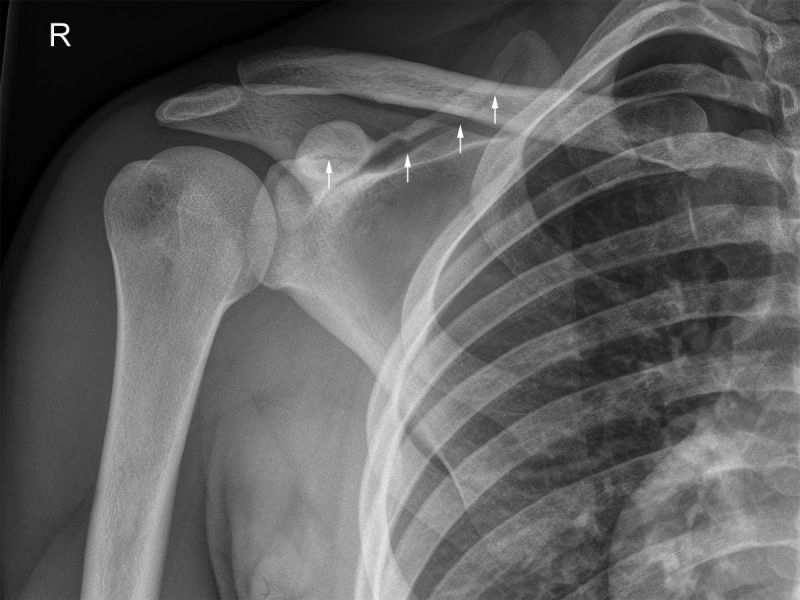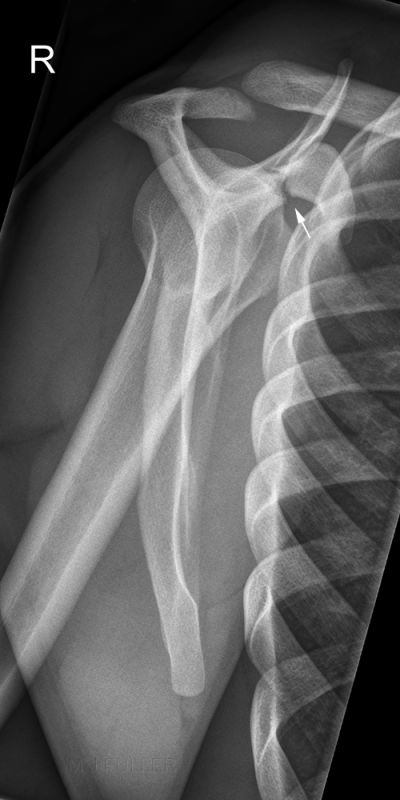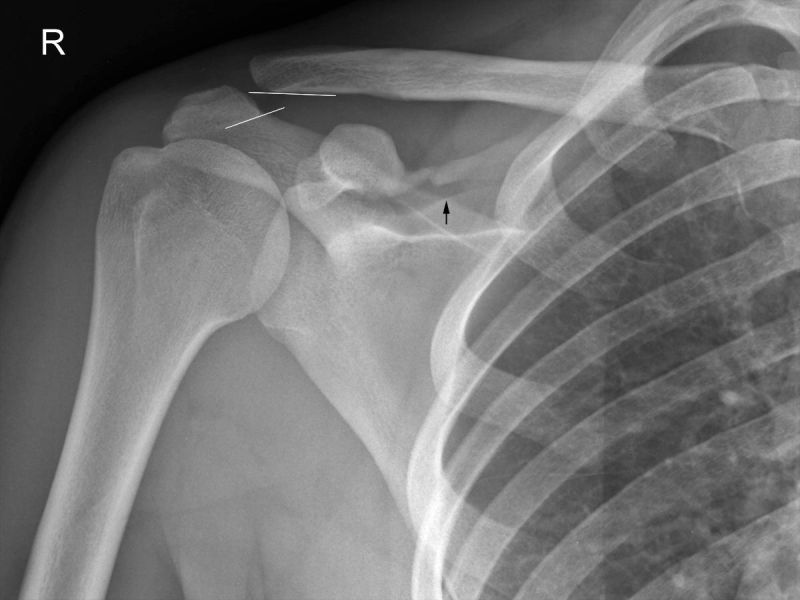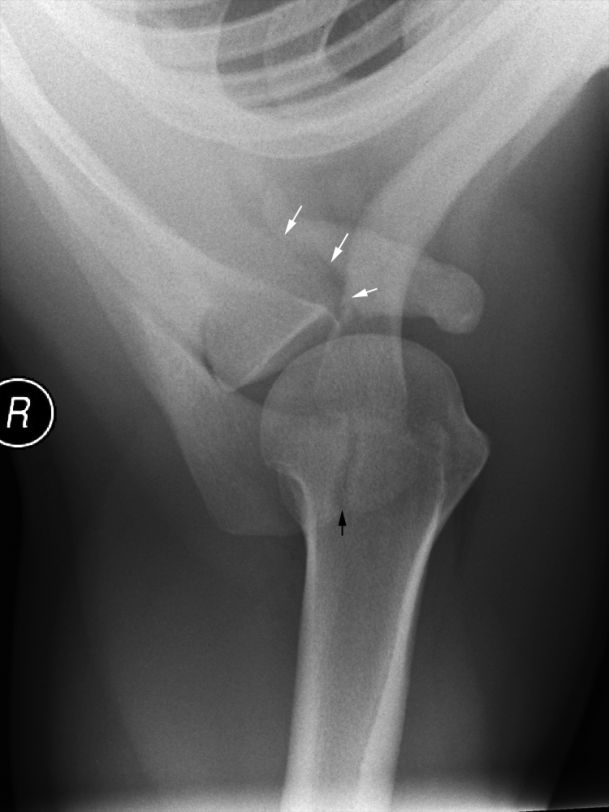Imaging Fractures of the Coracoid Process
Fractures of the coracoid process of the scapula are uncommon but not rare fractures. This page considers all aspects of the radiography of coracoid process fractures.
Incidence
Coracoid fractures have been described as uncommon injuries, but more recently there has been an increasing number of reports of their occurrence. The incidence has been assessed at between 3% and 13% of all scapular fractures; these constitute 1% of all fractures and 5% of those of the shoulder. <a class="external" href="http://www.jbjs.org.uk/cgi/reprint/79-B/1/17.pdf" rel="nofollow" target="_blank">(FRACTURES OF THE CORACOID PROCESS, KIYOHISA OGAWA, ATSUSHI YOSHIDA, MASAAKI TAKAHASHI, MICHIMASA UIJ Bone Joint Surg [Br] 1996;78-B:17-9.)</a>
Mechanisms of Injury
"The most frequent cause of a coracoid fracture is direct trauma, but indirect trauma may also lead to a fracture of this kind. Avulsion injuries as part of an acromioclavicular dislocation are the most frequent forms of trauma. For the rare cases of an anterior shoulder dislocation with concomitant coracoid fracture, two different mechanism are discussed. One cause of the coracoid fracture could be direct impact of the dislocated head of the humerus on the coracoid process, another may be the occurrence of a sudden strong pull of the muscles inserting at the coracoid process during shoulder dislocation. In the majority of cases, conservative treatment with six weeks of immobilization is appropriate" <a class="external" href="http://www.biomedexperts.com/Abstract.bme/12232744/Coracoid_pseudarthrosis_caused_by_anterior_shoulder_dislocation_with_concomitant_coracoid_fracture" rel="nofollow" target="_blank">(Kälicke T; Andereya S; Gekle J; Müller E J; Muhr G, Coracoid pseudarthrosis caused by anterior shoulder dislocation with concomitant coracoid fracture, Der Unfallchirurg2002;105(9):843-4.)</a>
Case 1
... back to the Wikiradiography Home page
... back to the Applied Radiography home page



